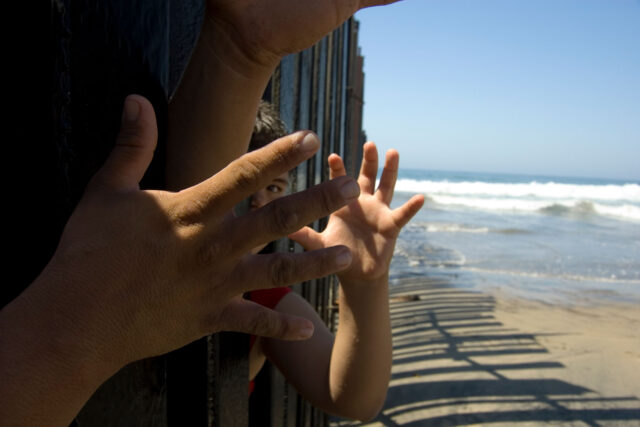California has more immigrants than any other state.
- California is home to 10.4 million immigrants—23% of the foreign-born population nationwide.
- In 2022, the most current year of data, 27% of California’s population was foreign born, the highest share of any state and more than double the percentage in the rest of the country (12%).
- Almost half (46%) of California children have at least one immigrant parent.
- More than a third (34%) of prime-working-age adults—those 25 to 54—are foreign born; indeed, 53% of all foreign-born Californians are in this age group.
Immigration flows increased in the past year, but remain low by historic standards.
- From 2010 to 2022, California’s immigrant population increased only 3% (by about 310,000), compared to a 14% (or 1.2 million) increase from 2000 to 2010, and a 37% (or 2.4 million) rise in the 1990s.
- This fall-off in international immigration has contributed to the slowdown of California’s overall population growth in recent decades.
- Recent Department of Finance estimates show that net immigration to California rose to 116,000 from July 2022 to July 2023. Between July 2020 and July 2021, California’s net immigration flow was at its lowest point (27,400) in at least three decades—a consequence of the pandemic and policies that limited travel.
The vast majority of immigrants in California are documented residents.
- In 2022, more than half (54%) of California’s immigrants were naturalized US citizens. This share has increased consistently since 1990 when only 31% of immigrants were naturalized.
- The Pew Research Center estimates that 1.85 million immigrants in California were undocumented in 2021, down from 2.80 million in 2007. The share of immigrants who are undocumented declined from 28% in 2007 to 18% in 2021. In 2021, 82% were either citizens or had some other legal residency status.
California’s immigrant population is concentrated in coastal metropolitan areas.
- Immigrants are concentrated in the state’s large coastal counties. In 2022, foreign-born residents represented at least one-third of the population in Santa Clara (41%), San Mateo (36%), Alameda (34%), San Francisco (34%), and Los Angeles (33%) Counties.
- Meanwhile, in some of the far northern counties of the state such as Humboldt (6%), Shasta (5%), and Butte (8%), foreign-born residents made up a very small share of the population.
Almost half of immigrants are from Latin America, but a majority of recent arrivals are from Asia.
- The vast majority of California’s immigrants were born in Latin America (49%) or Asia (40%).
- California has large numbers of immigrants from dozens of countries; the leading countries of origin are Mexico (3.8 million), the Philippines (807,300), China (784,700), India (580,800) and Vietnam (521,100).
- Among immigrants who arrived between 2013 and 2022, more than half (51%) were born in Asia, while 35% were born in Latin America.
California’s immigrants have varying levels of education.
- Foreign-born residents accounted for 70% of those age 25 to 64 without a high school diploma and 32% of those with at least a bachelor’s degree.
- Overall, 48% of California’s immigrants have no more than a high school diploma, compared with 28% of US-born Californians. A third (34%) of foreign-born residents have bachelor’s degrees, compared to 40% of US-born residents.
- However, slightly over half (52%) of immigrants who came to the state between 2013 and 2022—and 65% of those who were born in Asia—have at least a bachelor’s degree.
Most of California’s immigrants speak at least some English.
- About two-thirds (67%) of immigrants in California report speaking English very well or well, 22% speak English but not well, and 11% speak no English.
- Even among recent immigrants, those in the US for five years or less, 60% report speaking English well or very well, while 18% speak no English.
- Most immigrants speak a language other than English at home; Spanish (51%), Chinese, (10%), Tagalog (5.9%), Vietnamese (4.7%), and Korean (3.1%) are most commonly spoken.
Californians have positive views of immigrants.
- When Californians are asked whether immigration is good or a bad for the US, 69% say it is a good thing. Four in ten say immigration should be kept at its present level; 36% say it should be decreased and about 24% say it should be increased.
- An even larger share (80%) favor providing a path to citizenship for undocumented immigrants who meet certain requirements (e.g., waiting periods, fines and back taxes, and criminal background checks).
Topics
Immigrants in California PopulationLearn More

Fact Sheet · January 2024
California’s Population

Blog Post · November 2, 2023
California’s Changing Immigration Is Reshaping Its Electorate

Report · October 2023
Health Conditions and Health Care among California’s Undocumented Immigrants

Explainer · October 2023
Race and Diversity in the Golden State

Policy Brief · March 2023
Policy Brief: Pandemic Changes to Medi-Cal and Implications for California’s Immigrant Farmworkers

Report · June 2021
Health Coverage and Care for Undocumented Immigrants: An Update

Blog Post · October 12, 2023
Californians See Problems at the Border but Sympathize with Migrants

Blog Post · June 27, 2023
Commentary: The Importance of Californians’ Views on Immigration Policies

Blog Post · January 30, 2023
California’s Highly Educated Immigrants

Blog Post · October 5, 2022
California’s Hispanic Community

Blog Post · May 24, 2022
California’s AAPI Community

Blog Post · March 10, 2022
Ukrainian Immigrants in California

Blog Post · March 26, 2021
Comprehensive Immigration Reform Could Diversify California’s Electorate


